The following is a guest post by Kenan Cruz Çilli, a Turkish/Portuguese writer and researcher. His interests include cultural heritage and minority identity in Turkey. Follow him on Twitter @kenancruz and on Instagram @TurkeyHeritageWatch.
***
In 1922, Russian artist Yevgeny Lansere came to Ankara upon the invitation of the Soviet ambassador, Semyon Aralov. Though it had not yet been declared the nation’s capital, Ankara was already the centre of Turkey’s national movement, led by Mustafa Kemal Atatürk. This was primarily motivated by security considerations: Ankara was more geographically isolated than Istanbul, which in previous decades had nearly been overrun by both Russian and Bulgarian forces. The security concerns of the nationalist movement were validated in 1918, when Istanbul came under the military occupation of the Allied forces following the Ottoman Empire’s defeat in World War I. In this context, the nationalist movement based in Ankara made it its mission to expel the Allied occupation in Anatolia and Thrace and to establish a new Turkish nation-state in its stead.
The newly-established Soviet Union, wishing to support anti-imperialist movements around the world, had for this reason already appointed an envoy to this small central Anatolian town. Throughout his stay in Ankara during this critical period, Lansere produced extensive notes describing Ankara’s bustling market, its residents, and the general social and political changes that were underway as the new Turkish nation-state was beginning to take shape. These notes were accompanied by a series of detailed illustrations, offering readers a window into life in Ankara just a year before it was proclaimed the capital city of the Turkish republic.

A particularly captivating point in Lansere’s notes is the description of his bewilderment at the fact that he could hear the Spanish language being spoken in certain parts of Ankara. The language he refers to is not exactly Spanish, but Judeo-Spanish – or Ladino – the language of exiled Sephardic Jews who settled in the Ottoman Empire following expulsions from Spain and Portugal in the late 15th century.
Modern-day understandings of Ankara’s history, influenced and shaped by the discourses of Turkish nationalism, seek to paint a picture of Ankara in the Ottoman era as a small, remote, ethnically, linguistically, and religiously homogeneous town. According to this nationalist perspective, it was precisely these characteristics that made Ankara a worthy candidate for the capital city of the Turkish republic in 1923.
Ankara was thus portrayed by early Republicans as a model Turkish-Muslim town that could serve as a blank slate for the urban, political, and social changes envisioned for republican Turkey. Ankara was reimagined as the antithesis to the perceived backwardness, decadence, religiousness, and cosmopolitanism of the former imperial centre of Istanbul. Thus, shifting the seat of power to Ankara was seen as an opportunity to rebrand Turkey and to realise a new vision for Turkish urbanism and modernity.
However, this understanding of Ankara serves to efface the city’s multicultural past. In reality, Ankara in the late Ottoman era was a city of noteworthy religious diversity and confessional conviviality, with significant Armenian, Greek Orthodox, and Jewish populations. The transformation of Ankara into the largely homogeneous capital of the Republic occurred as a result of a series of events beginning with the genocide of the Armenian population in 1915 and the Great Fire of Ankara in 1916 which largely destroyed the Christian neighbourhoods surrounding the historic citadel. Subsequently, linguistic and economic policies such as the “Citizen, speak Turkish!” campaign and the Wealth Tax continued the process of Turkification in the early republican period, accelerating the emigration of the small non-Muslim communities that had remained in Ankara. Physical catastrophes such as the Great Fire and the homogenising urban and demographic policies of the Turkish state in the early 20th century caused irreparable damage to the cosmopolitanism of Ankara. They resulted in the large-scale destruction of not only its non-Muslim communities, but also much of the city’s non-Muslim cultural heritage.


In the early decades of the Republic, as the new buildings, boulevards, parks, squares, and thoroughfares of modern Ankara were designed and constructed, the city’s non-Muslim cultural heritage was sidelined, and oftentimes destroyed. Little remains today that attests to the Armenian, Greek Orthodox, and Jewish communities that once called Ankara home. As the city continues to grow rapidly in the present day, the local and national collective memory of Ankara’s minority communities also continues to disappear. Visitors to Ankara and long-time residents alike are often unaware, for instance, that the iconic former presidential residence in the city, the Çankaya Köşkü (or Çankaya Mansion), was originally the home of an Armenian jeweller and merchant by the name of Ohannes Kasabian. This mansion and its adjacent vineyard was one of many summer estates dotted around the outskirts of Ankara on the hills of Çankaya and Dikmen. Many of Ankara’s wealthier Armenian and Greek Orthodox residents, who were deeply involved in trade and commerce, built mansions like the famous Çankaya Köşkü to escape the city’s arid summers.
The story of the Çankaya Köşkü widely mirrors that of many Armenians properties in Turkey. In 1915, following the execution of deportation orders that launched the Armenian Genocide, the properties of Armenians were seized by the state. As hundreds of thousands of Armenians perished over the ensuing year, most of these properties were never returned. The nationalist prism through which discourses about modern-day Ankara were constructed works to selectively obscure historic details pertaining to the non-Muslim history and heritage of the city. As such, it is no surprise that the webpage on the history of the Ankara Mansion on the official website of the Turkish Presidency makes no reference to the building’s original Armenian proprietors. The mansion, which today houses a museum, is thus effectively stripped of its identity in all but a small Armenian-language inscription on a fountain in its garden.
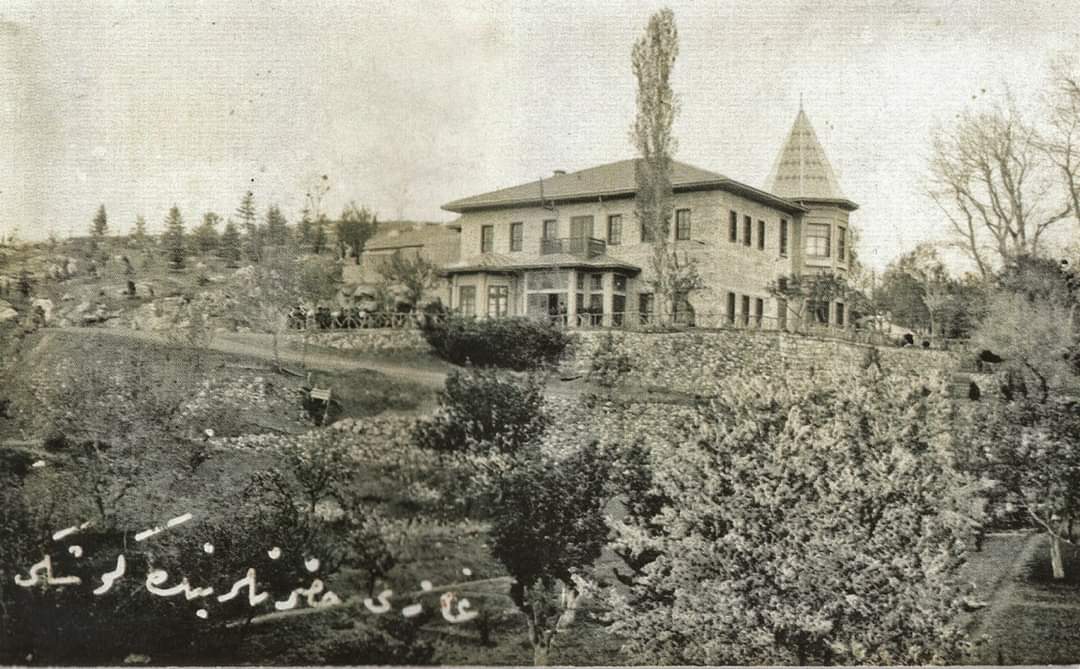
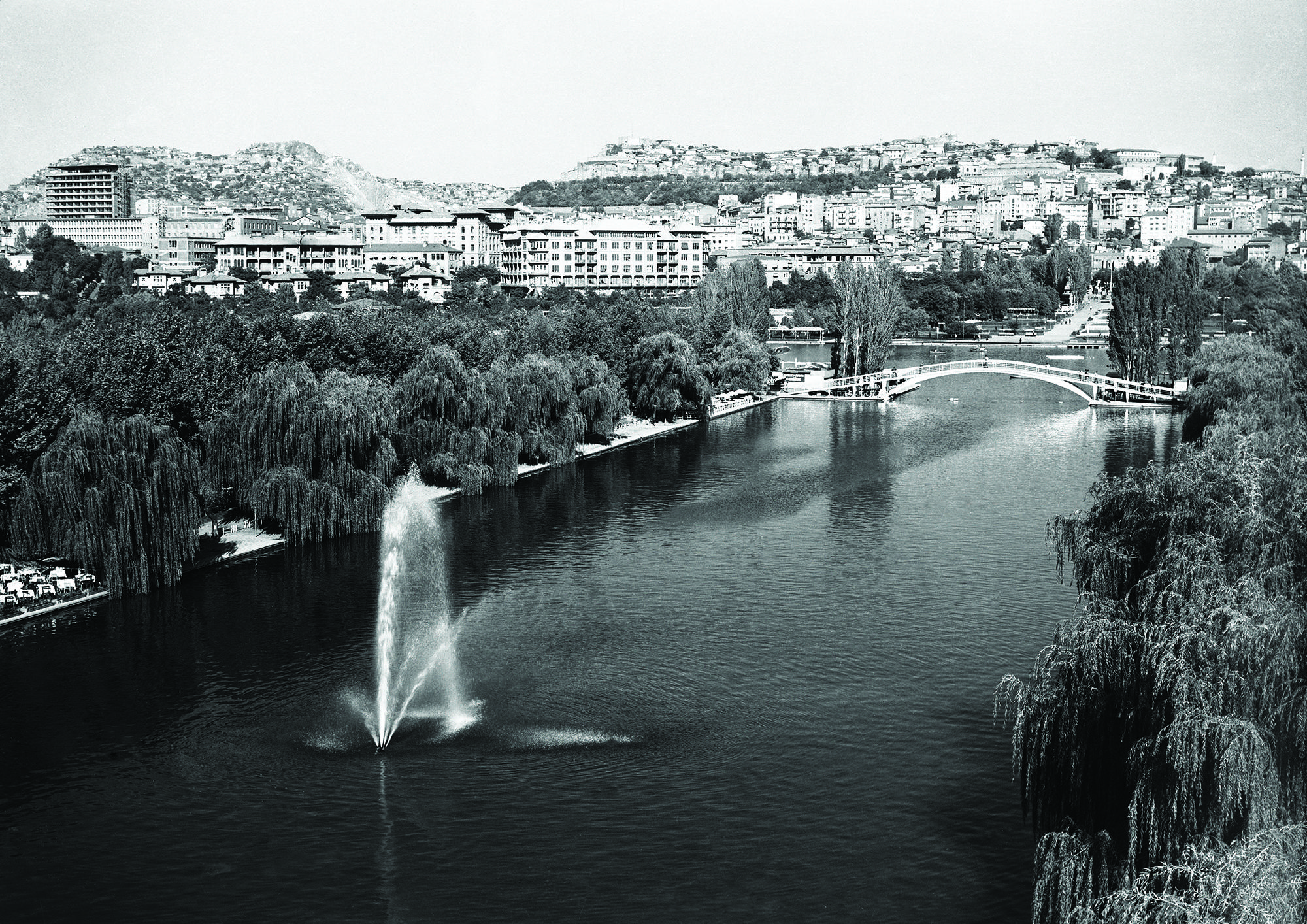
In 1914, Ottoman Ankara was home to a population of around 85,000 people, with Muslims constituting a majority of around 69,000. Armenians formed the second largest community with just over 11,000 people, followed by smaller Greek Orthodox and Jewish populations. Many of Ankara’s Christians resided in and around the neighbourhoods surrounding the town’s historic castle.
There were approximately thirteen churches in Ankara at this time, most of which belonged to the Armenian community. The Great Fire of 1916 ravaged Ankara, razing several neighbourhoods to the ground. The cause of the fire is a matter of dispute, though many have claimed it was a calculated act of arson. What is certainly clear is that the firefighting infrastructure at the time was severely ill-equipped and insufficient, and the fire disproportionately destroyed neighbourhoods in which non-Muslims resided. Almost all of Ankara’s churches went up in flames in the Great Fire, whilst the few that remained were destroyed in the years to come.
Nowadays, no Armenian church or chapel remains standing in Ankara. The last Armenian religious site to survive in the city was the former chapel and cemetery belonging to the Armenian Catholic community. This religious complex was demolished in 1947, marking an end to centuries of Armenian ecclesiastical presence in Ankara. Several of the most noteworthy tombstones from this cemetery and other non-Muslim cemeteries that were destroyed in this period were transported to the open-air Roman Baths Museum not too far away from where the Catholic cemetery was once located. Today, the Roman Baths Museum is in many ways a cemetery of cemeteries, with tombstones belonging to figures such as an Armenian priest by the name of Bedros Kulahlian, and a Jewish rabbi named Shlomo Halevi (whose Hebrew-language tombstone was mistakenly propped upside-down). The Armenian Catholic cemetery that was razed to the ground in 1947 recently made headlines in Turkey, when the remains of human bones were found on the site as construction work began on a new building complex in the area. The pleas and demands of many activists and politicians to halt the construction work and save the site failed to result in the former cemetery’s preservation.
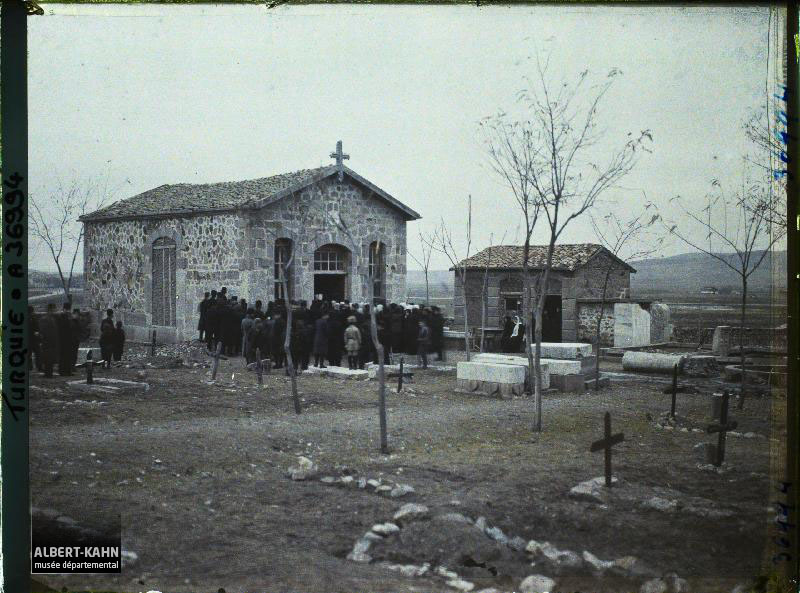

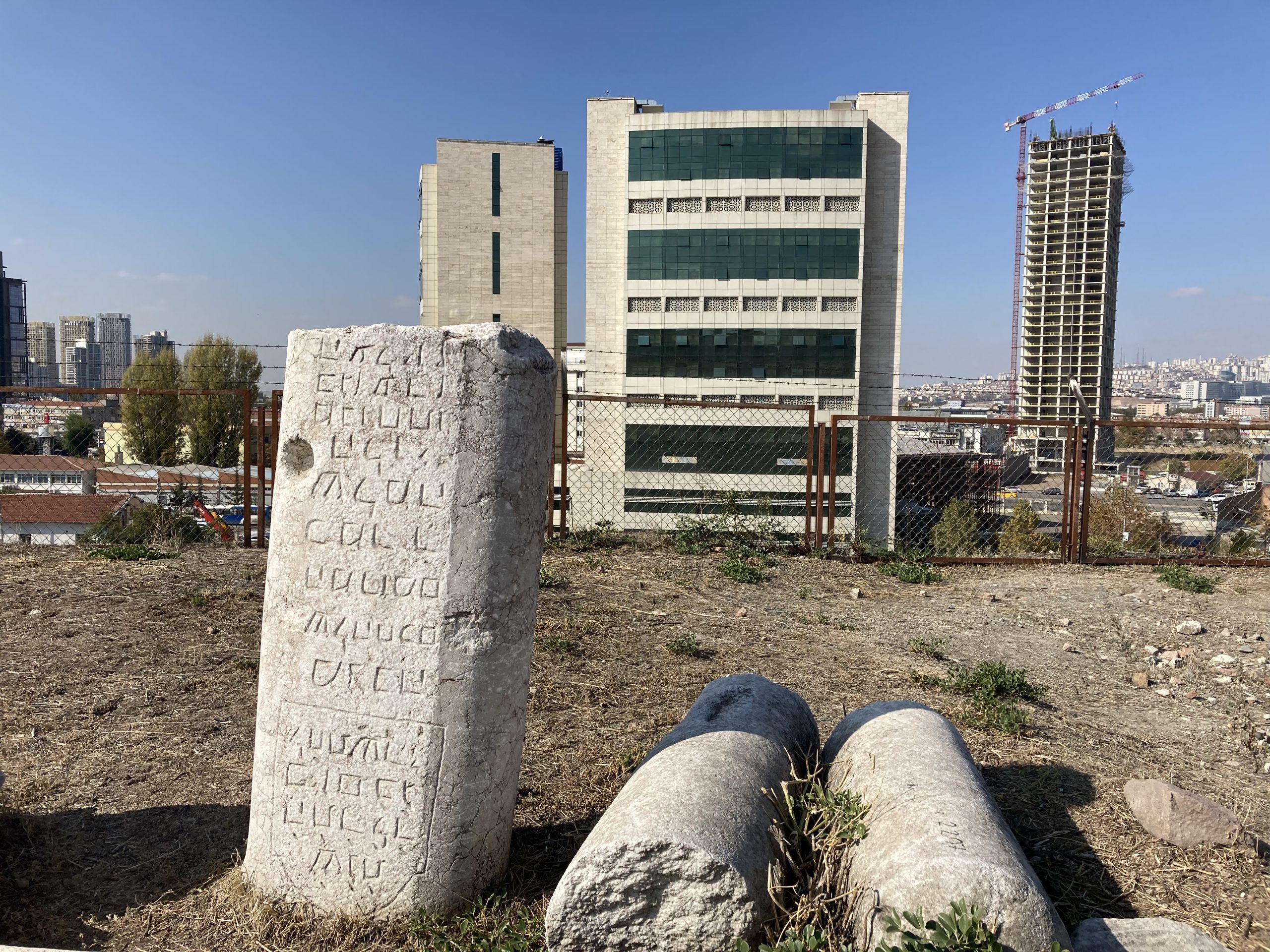
Not too far away from the former Armenian neighbourhoods of Ankara lies the city’s old djuderia, or Jewish quarter. A hundred years ago, when Yevgeny Lansere wrote of Spanish being spoken in Ankara, he was likely referring to the narrow, winding streets of the djuderia. Nowadays, it is virtually impossible to hear any Ladino in Ankara, let alone in the former Jewish quarter, where hundreds of Sephardic Jews once lived. The djuderia continued to be the focal point of the local Jewish community until the 1930s, when many Jews began to move to the new, modern neighbourhood of Yenişehir. Contrary to other non-Muslim communities in Ankara, the Jewish population actually grew in the first decades of the Republic, as new opportunities arose in the city after it was proclaimed Turkey’s capital. Nonetheless, as in the rest of Turkey, the anti-minority policies of the early Republic eventually triggered Jewish emigration.
The Incident of the Twenty Classes, for instance, was a discriminatory conscription policy that saw the establishment of special military units composed exclusively of non-Muslim Turkish citizens. These non-Muslim conscripts were not given military training and were not allowed to carry weapons, but were rather made to work in manufacturing, construction, and road works. As a measure that was implemented during World War II, in which Turkey remained neutral, the conscription of the Twenty Classes was predicated on the notion that non-Muslims citizens were the potential collaborators of external powers, and not equal citizens with equal rights and duties. During the Incident of the Twenty Classes, many Jewish conscripts in Ankara were made to work on a military base in the centre of the city, paving roads and planting trees – ultimately creating Gençlik Parkı (Youth Park) one of the oldest urban parks in Ankara.
The Jewish population of Ankara began to decline in the mid-20th century as many Jewish families emigrated to Israel following its establishment in 1948. Others migrated to Istanbul, where the largest Jewish community in Turkey is concentrated, as the political climate in Ankara became increasingly volatile with successive military coups and increased political polarisation. Today, the beautiful Ottoman-era mansions of the djuderia are crumbling, with occasional news stories reporting on their sorrowful collapse or pernicious arson. As the neighbourhood continues to decay, one faithful reminder of its Jewish identity remains standing at its centre: its synagogue.
The impressive Ankara Synagogue was constructed in its current form in 1907. With its ornate Turkish-style rugs, and its wooden tevah located right at the building’s centre, it is an excellent example of a typical Ottoman-era Sephardic synagogue. The structure’s interior is wonderfully illuminated, and its emblazoned Torah Ark may be one of the most beautiful in the country. Unfortunately however, the Ankara Synagogue is almost always closed to visitors, with its doors being opened no more than once or twice a year, on specific dates such as Yom Kippur or Sukkot. In 2020, Ankara’s newly-elected mayor Mansur Yavaş made a pledge to preserve all historic neighbourhoods in Ankara, including the djuderia. However, in the wake of the coronavirus pandemic and ongoing economic downturn, plans to rescue the neighbourhood have not yet materialised.
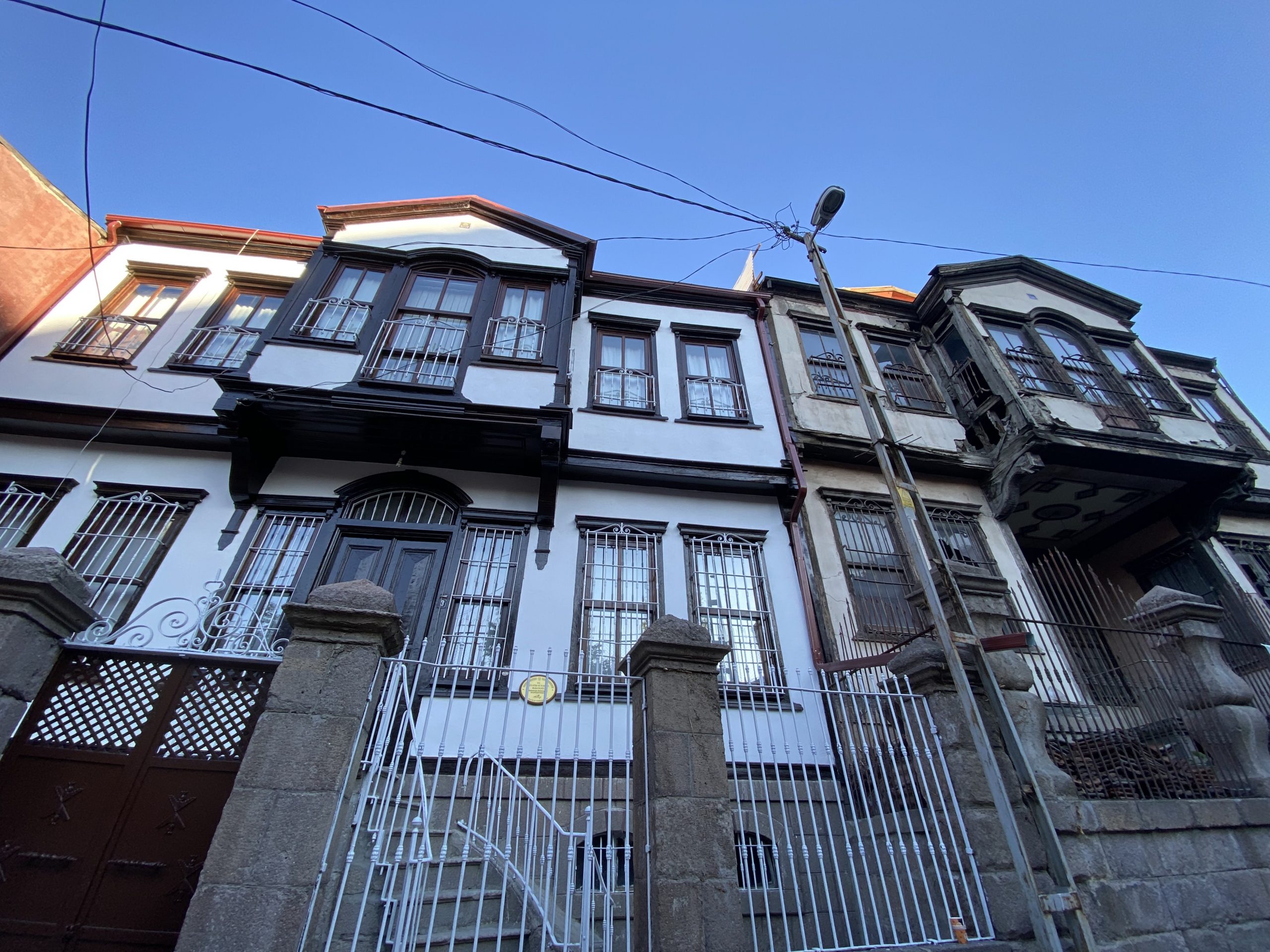


Contrary to popular republican framings of Ankara’s history, the city was not always a model Turkish-Muslim town. The Ankara that exists today became the homogeneous capital of the Turkish republic as a result of a series of calculated policies in line with the nationalist ideals that dominated 20th century politics worldwide. The state-propagated official narrative of Ankara’s history serves to erase the memories of cosmopolitanism in the city. Nevertheless, as the non-Muslim history of Ankara is so deeply intertwined with the history of the city as a whole, reminders of this lost cosmopolitanism continue to resurface in the present-day. From the iconic Çankaya Köşkü, which was for decades the symbolic heart of the Republic, to important public spaces such as Gençlik Parkı, reminders of a pluralist past are ever present.
Nowadays, what remains of Ankara’s historic multiculturalism is an Armenian community numbering around 300 members, and a tiny Jewish community of about 35. The Armenian community consists of both Ankara natives from the nearby town of Stanoz/Zir, as well as the descendents of Armenians from other parts of Anatolia who survived the genocide of 1915. In the absence of an Armenian church in the city, many of the Armenians of Ankara congregate at the Catholic Church of St Theresa, which is located in one of the many neighbourhoods originally devastated by the Great Fire of 1916. The small Turkish-Jewish community is joined on special occasions by delegations from the much larger Jewish community of Istanbul to mark certain high holidays at the historic synagogue in the djuderia.
As the city’s overall population continues to push past 5 million, with new neighbourhoods and highrises popping up throughout the metropolis, the diverse history and multi-religious heritage of Ankara can continue to act as a window into Ankara’s Ottoman past. As Turkey continues to grapple with questions of diversity in the present day, recognising past injustices can help establish a roadmap to a more equitable and just society. Therefore, it is of utmost importance that the remaining Armenian and Jewish sites in Ankara be safeguarded and conserved, and that cultural heritage projects and urban planning policies in the city take into consideration the ethnic and religious diversity that once characterised the Turkish capital.

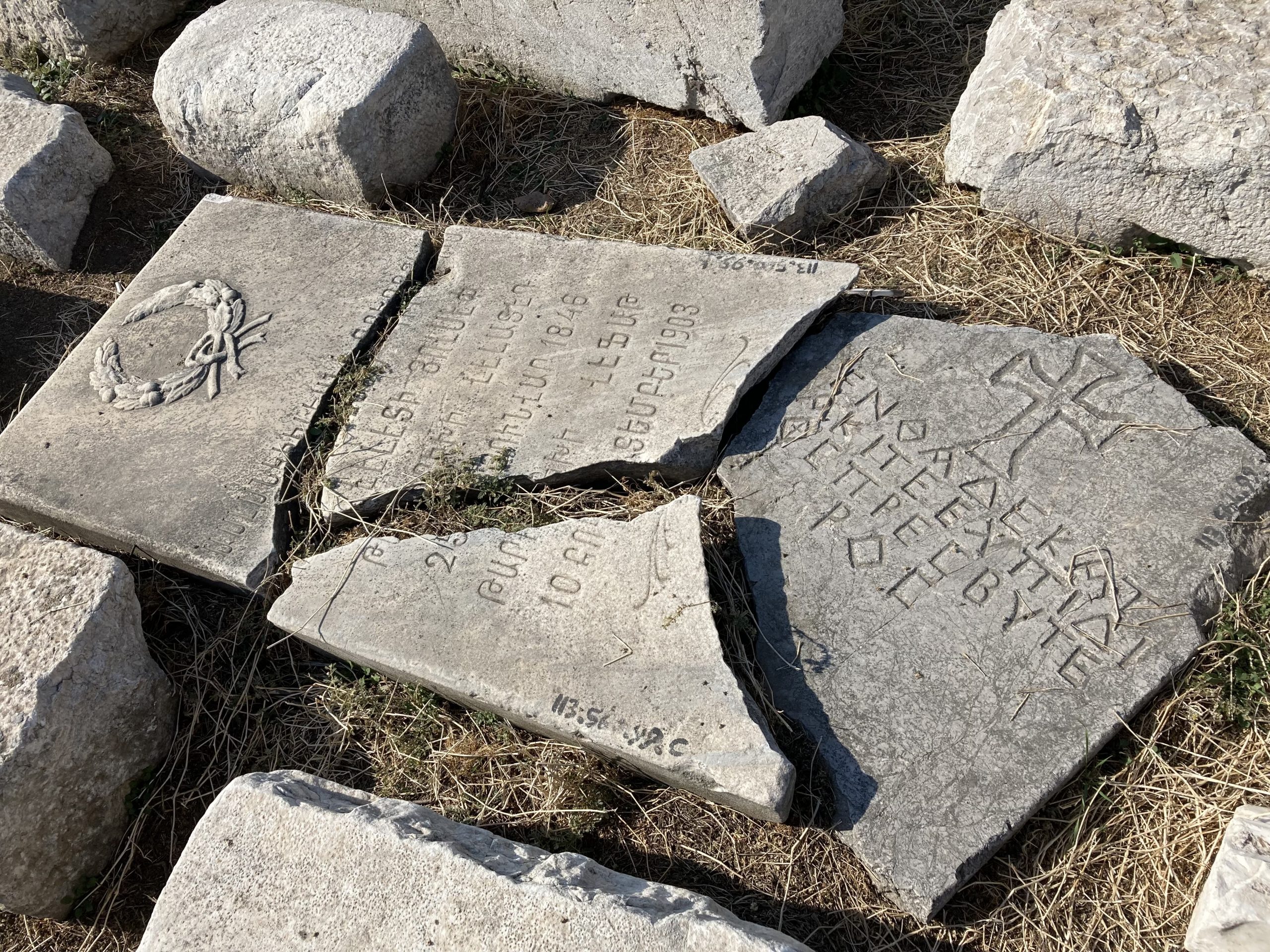

References:
“1916 Ankara Yangını.” Hafıza Kaydı. http://www.hafizakaydi.org/buyukankarayangini.
Akpınar, Ipek. The Rebuilding of Istanbul after the Plan of Henri Prost, 1937-1960: From Secularisation to Turkish Modernisation, 2003.
“Ankara’daki Yahudi Mahallesi Yıkım Tehlikesi Altında.” soL, March 22, 2021. https://haber.sol.org.tr/haber/ankaradaki-yahudi-mahallesi-yikim-tehlikesi-altinda-28479.
Bahar, Beki Luiza. Efsaneden Tarihe: Ankara Yahudileri. İstanbul: Pan, 2003.
Balancar, Ferda. The Sounds of Silence III: Ankara’s Armenians Speak. İstanbul: Hrant Dink Foundation, 2015.
Basa, Inci. “From Praise to Condemnation: Ottoman Revivalism and the Production of Space in Early Republican Ankara.” Journal Of Urban History 41, no. 4 (2015): 711-738.
Djirikian, Catherine. “Catherine Djirikian Collection – Los Angeles.” Houshamadyan. https://www.houshamadyan.org/oda/americas/catherine-djirikian-collection-usa.html.
Esin, Taylan, and Zeliha Etöz. 1916 Ankara Yangını: Felaketin Mantığı. İstanbul: İletişim Yayınları., 2015.
Gül, Mehmet Murat, and Lamb, Richard. “Urban Planning in Istanbul in the Early Republican Period.” Architectural Theory Review 9, no. 1 (2004): 59-81.
Kelleci, Aved. “Ankara’da Katolik Ermenilere Ait Son Şapel Ve Cemaatin Fransız Kilisesi’ne İntikali.” Ankara Araştırmaları Dergisi = Journal of Ankara Studies 8, no. 2 (2020): 337-59.
Keyder, Çağlar. “Capital City Resurgent: İstanbul since the 1980s.” New Perspectives on Turkey 43, no. 43 (2010): 177-86.
Kezer, Zeynep. “Of Forgotten People and Forgotten Places: Nation-Building and the Dismantling of Ankara’s Non-Muslim Landscapes.” Essay. In On Location Heritage Cities and Sites, edited by D. Fairchild Ruggles, 169–91. Springer, 2012.
Lansere, Yevgeny. Ankara Yazı: Bir Sovyet Sanatçısının 1922 Yılı Notları Ve Resimleri. Translated by Mehmet Bora Perinçek. İstanbul: Kaynak Yayınları, 2004.
Özdemir, Özgü, and Okan Yücel. “Ankara Ulus’ta Üzerine Toki̇ Inşaatı Yapılan Ermeni Katolik Mezarlığı Ve Şapeli’nin Hikâyesi: Başkentin Yerli Hıristiyanları’na Ait Son Kilise.” Medyascope, March 26, 2021. https://medyascope.tv/2021/03/26/ankara-ulusta-uzerine-toki-insaati-yapilan-ermeni-katolik-mezarligi-ve-sapelinin-hikayesi-baskentin-yerli-hiristiyanlarina-ait-son-kilise/.
Türkiye Cumhuriyeti Cumhurbaşkanlığı. “Atatürk Müze Köşkü.” Ana Sayfa. https://www.tccb.gov.tr/muzekosk/.
Uluğ, Elif, and Mansur Yavaş. “Ankara’da Kültürel Bir Miras: Yahudi̇ Mahallesi̇.” Şalom Gazetesi, March 18, 2020. https://www.salom.com.tr/haber-114814-ankara_belediye_baskani_mansur_yavas_tum_tarihi_bolgeleri_canlandirmak_icin_koklu_calismalar_yapacagiz.html











